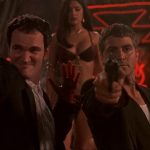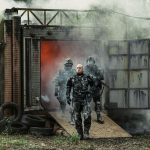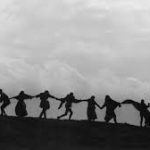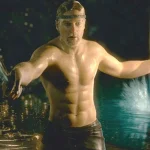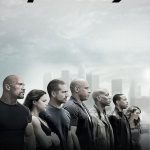One Flew Over the Cuckoo’s Nest (1975)
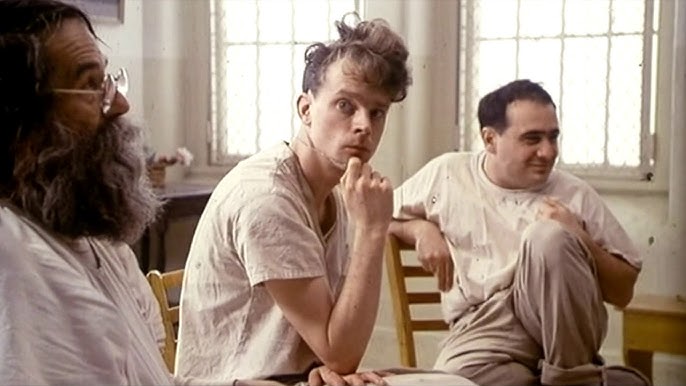
Plot Overview
One Flew Over the Cuckoo’s Nest opens with Randle Patrick “R.P.” McMurphy (Jack Nicholson), a roguish petty criminal, arriving at an Oregon state mental hospital in 1963. Facing a prison sentence for statutory rape, McMurphy feigns insanity to serve his time in what he assumes will be an easier environment. The film wastes no time establishing his rebellious spirit—he smirks at the orderlies, cracks wise during his intake, and sizes up the ward with a gambler’s eye. But the hospital, run with cold precision by Nurse Mildred Ratched (Louise Fletcher), proves anything but lenient.
The ward is populated by a mix of patients—“voluntary” and committed—each broken in their own way. McMurphy quickly befriends the group: Billy Bibbit (Brad Dourif), a stuttering young man crippled by insecurity; Chief Bromden (Will Sampson), a towering Native American who pretends to be deaf and mute; Martini (Danny DeVito), a cheerful simpleton; and Harding (William Redfield), an intellectual tormented by his wife’s infidelity. Ratched rules them with a velvet-gloved tyranny, using group therapy to expose their vulnerabilities and maintain control, her calm demeanor masking a sadistic streak.
McMurphy’s arrival disrupts this stasis. He challenges Ratched’s authority with pranks—stealing a bus for a fishing trip, hosting a contraband-fueled party with prostitutes Candy (Marya Small) and Rose (Louisa Moritz), and rallying the patients to demand a World Series broadcast. Each act of defiance chips away at Ratched’s grip, igniting hope in the men—especially Chief, who reveals he can speak during a late-night confession about his father’s downfall. McMurphy’s rebellion peaks when he learns most patients are voluntary, including himself—he could’ve walked out but didn’t know it—prompting a failed escape attempt through a barred window.
The climax erupts after the party, when Ratched discovers Billy with Candy and threatens to tell his mother, shattering his fragile confidence. Billy slits his throat in despair, and McMurphy, enraged, attacks Ratched, nearly strangling her before orderlies intervene. The aftermath is brutal—McMurphy is lobotomized off-screen, returned to the ward as a hollow shell. Chief, unable to bear seeing his friend reduced to a vegetable, smothers McMurphy with a pillow in a mercy killing. Inspired by McMurphy’s spirit, Chief hurls a hydrotherapy fountain through the window—the escape McMurphy couldn’t manage—and flees into the night as the credits roll.
The screenplay, by Lawrence Hauben and Bo Goldman, condenses Kesey’s novel (narrated by Chief) into a tighter narrative, shifting focus to McMurphy while preserving its critique of institutional power. At 133 minutes, it’s a slow burn that builds to a devastating crescendo, balancing humor with tragedy in a way that honors the book’s spirit, if not every detail.
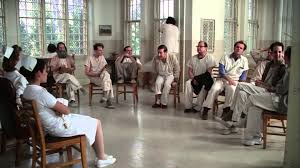
Character Dynamics and Performances
Jack Nicholson’s R.P. McMurphy is a tour de force, a whirlwind of charisma and chaos that defines the film. Nicholson plays him with a devilish grin and twinkling eyes, his every “Hey, fellas!” dripping with mischief—whether he’s teaching the patients blackjack or goading Ratched with mock politeness. Yet beneath the bravado lies a raw humanity—his fury at Billy’s death or his quiet bond with Chief reveal a man who’s less a savior than a wounded soul fighting for freedom. Nicholson’s improvisational energy—those wild cackles, that swagger—makes McMurphy unforgettable, a rebel whose defiance feels both reckless and righteous.
Louise Fletcher’s Nurse Ratched is his chilling opposite, a masterclass in understated menace. Fletcher eschews caricature for a steely calm—her soft voice and prim smile belie a cruelty that cuts deeper than shouts. She’s not a cartoon villain but a bureaucrat wielding power through manipulation, as when she turns Billy’s shame into a weapon. Fletcher’s restraint makes Ratched’s control palpable—her icy stare during therapy sessions or her smug triumph after McMurphy’s lobotomy linger long after the screen fades. The Oscar-winning duel between Nicholson and Fletcher drives the film, their battle of wills a microcosm of individuality versus conformity.
The ensemble is equally remarkable. Will Sampson’s Chief Bromden carries a silent dignity, his towering frame masking a gentle soul—his gravelly “Juicy Fruit” line to McMurphy cracks open his mute facade with heartbreaking warmth. Brad Dourif’s Billy Bibbit is a nervous wreck, his stutter and wide eyes conveying a fragility that shatters in the tragic finale—Dourif’s raw breakdown under Ratched’s threat is gut-wrenching. Danny DeVito’s Martini and Christopher Lloyd’s volcanic Taber (in his film debut) add levity and volatility, while William Redfield’s Harding brings a weary intellect to the mix.
The group’s dynamic shifts with McMurphy’s influence—his camaraderie turns their resignation into resistance, though never fully. Chief’s bond with McMurphy—culminating in that mercy killing—carries the emotional weight, a silent pact of liberation. Ratched’s control over the patients, especially Billy, reveals her as their oppressor, not their healer. The performances, many from unknown actors at the time, feel lived-in—shot in a real Oregon psychiatric hospital, their authenticity amplifies the stakes, making every laugh and tear a rebellion against the ward’s soul-crushing order.
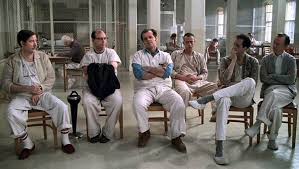
Direction and Visual Style
Miloš Forman’s direction transforms One Flew Over the Cuckoo’s Nest into a visceral, humanistic triumph, blending stark realism with subtle stylization. Filming in the Oregon State Hospital, where Kesey once worked, Forman uses its drab corridors and barred windows to create a claustrophobic prison—fluorescent lights buzz, walls loom, and the hydrotherapy fountain hulks like a sentinel. Cinematographer Haskell Wexler (with uncredited Bill Butler) employs a muted palette—grays, beiges, sickly greens—that mirrors the ward’s lifelessness, only breaking into color during McMurphy’s escapades, like the fishing trip’s golden sunlight.
Forman’s pacing is deliberate, letting scenes breathe—therapy sessions simmer with tension, McMurphy’s antics explode with anarchic glee, and the final act’s silence cuts like a knife. He favors long takes and handheld shots, immersing us in the ward’s rhythms—the camera lingers on patients’ faces during Ratched’s interrogations or tracks McMurphy’s strut through the halls. The World Series scene—McMurphy narrating an imaginary game as the men cheer—is a masterstroke, blending comedy and pathos without a cut, showing their fleeting freedom in a locked world.
The sound design, by Jack Nitzsche, is minimal but potent—distant screams, clanging doors, and the hum of machinery underscore the hospital’s menace. The score—a mix of saw, glass harmonica, and soft strings—adds an eerie, off-kilter texture, amplifying moments like Chief’s escape without overpowering them. Forman’s visual restraint avoids melodrama; McMurphy’s lobotomy isn’t shown, just its aftermath—a blank-eyed Nicholson slumped in bed—letting the horror sink in naturally.
Drawing from his Czech New Wave roots and experience under Soviet oppression, Forman infuses the film with a critique of authoritarianism—Ratched’s ward mirrors a totalitarian state, McMurphy a defiant everyman. He tones down Kesey’s psychedelic flourishes (like Chief’s hallucinations) for a grounded approach, though some purists miss the novel’s surreal edge. The result is a film that feels both timeless and specific, its visual language a quiet rebellion against the sterility it depicts.

Overall Impact and Reception
One Flew Over the Cuckoo’s Nest was a seismic hit, grossing $112 million (over $500 million adjusted) against a $4.4 million budget, dominating 1975’s box office. It swept the Oscars—Best Picture, Director, Actor, Actress, and Adapted Screenplay—one of only three films (with It Happened One Night and The Silence of the Lambs) to win the “Big Five.” Critics adored it—Vincent Canby called it “a comedy that soars”—earning a 93% on Rotten Tomatoes, though some, like Pauline Kael, faulted its simplification of Kesey’s anti-establishment bite.
Its cultural impact is colossal. Released amid post-Vietnam distrust of institutions, it struck a nerve—McMurphy became a counterculture icon, Ratched a shorthand for oppressive control. It shaped mental health discourse, critiquing psychiatric overreach (lobotomies were still legal then) while spotlighting patient humanity, though modern viewers note its dated portrayal of mental illness as spectacle rather than nuance. The film launched Nicholson into superstardom, cemented Forman’s Hollywood clout, and turned its cast into legends—many debuted here, their careers born in that ward.
For 1975 audiences, it was a cathartic rallying cry—a tragicomic revolt against conformity that hit harder after Watergate and the counterculture’s fade. Its legacy endures: ranked 33rd on AFI’s “100 Years… 100 Movies,” it’s a staple in film studies, its hydrotherapy smash a cinematic rite of passage. Flaws exist—its female characters (Ratched, the prostitutes) lean on stereotypes, and Chief’s “noble savage” trope feels dated—but they don’t dim its power.
Cuckoo’s Nest remains a raw, unruly masterpiece—a howl of defiance wrapped in laughter and tears, a testament to the human spirit’s refusal to be caged. It’s McMurphy’s middle finger to the machine, Chief’s run into the dawn—a film that breaks free and takes you with it.

